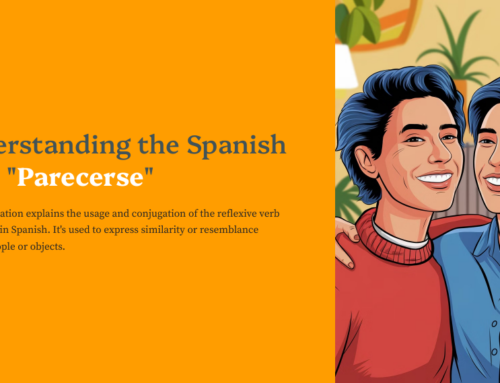Embark on a fascinating linguistic journey as we explore the differences and similarities between English and Spanish. These two languages, each with their own cultural and expressive richness, share links that manifest themselves in sentence structures and learning processes.
Going deeper into the Similarities
Cognates are like links connecting English and Spanish. By understanding that “family” translates to “familia,” you not only learn a word, but you gain a deeper understanding of both languages.
Sentence Structures as Mosaics
The similarity in sentence structures between English and Spanish is like a mosaic that ties the pieces of language together. From simple to complex sentences, this coherence makes the transition between the two languages a smoother and less overwhelming experience.
Pluralisation Explained
The rule of adding the letter “-s” to form plurals is more than a trick. It is a process that, once understood, opens the door to expanding vocabulary in both directions: “cities” to “cities” and vice versa.
Reading and Writing Processes as Common Pathways
The basic processes of learning to read and write follow parallel paths in English and Spanish. We begin with awareness of sounds, decode words, comprehend and finally master the mechanics of writing. This journey is universal and applicable to both languages.
Delving into the Differences that Enrich
Genderless Nouns
The simplicity of genderless nouns in English can be a relief for learners. “House” is simply “house,” without the need to remember whether it is masculine or feminine.
The Foreground Subject
The insistence on expressing the subject in every sentence in English brings us to a different level of clarity and specificity than in Spanish, where we can often afford to omit it. This difference highlights the importance of the subject in the construction of meaning.
Simplified Negation
The structure of negation in English is more straightforward, one negation in one sentence, unlike the multiple forms we sometimes use in Spanish. “I don’t like it” versus “No me gusta” exemplifies this concise difference.
Exploring the linguistic subtleties between English and Spanish is an immersion in two intertwined cultures. Take advantage of the similarities to strengthen your understanding and see the differences as opportunities to expand your language skills. The journey of learning both languages is a unique journey that will enrich your perspective and language skills!
Our academy is located in Marbella (Malaga). You can contact us by calling (+34) 682 348 583 or follow us on our social networks at Instagram and Facebook where we upload content that will help you learn the language and its culture better.




Leave A Comment
You must be logged in to post a comment.